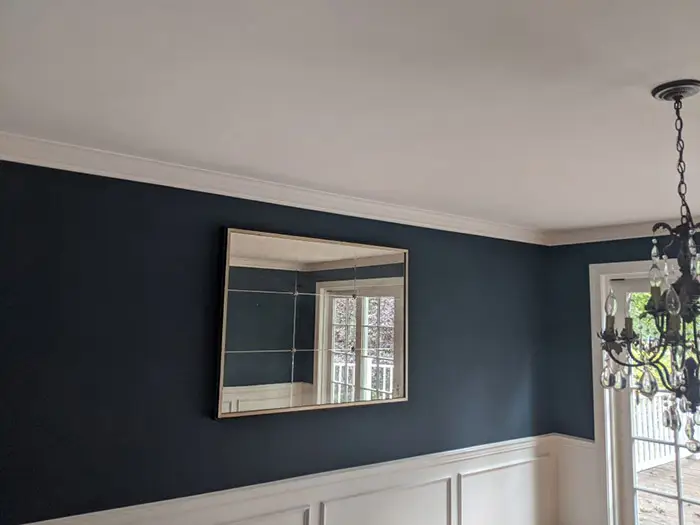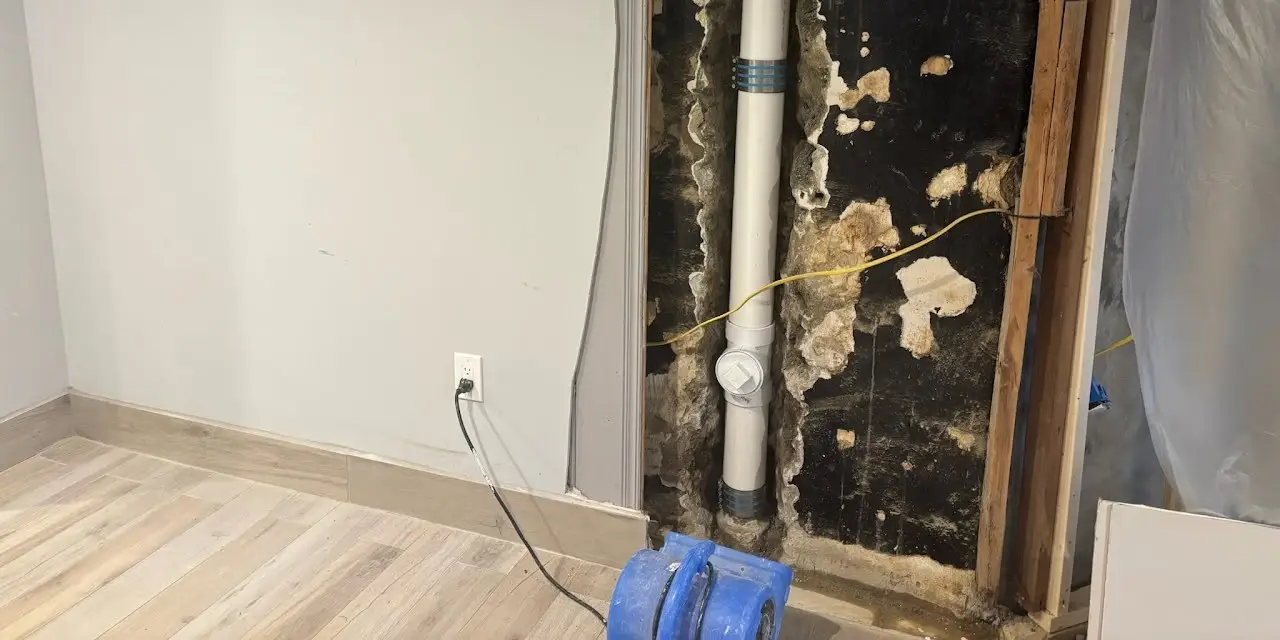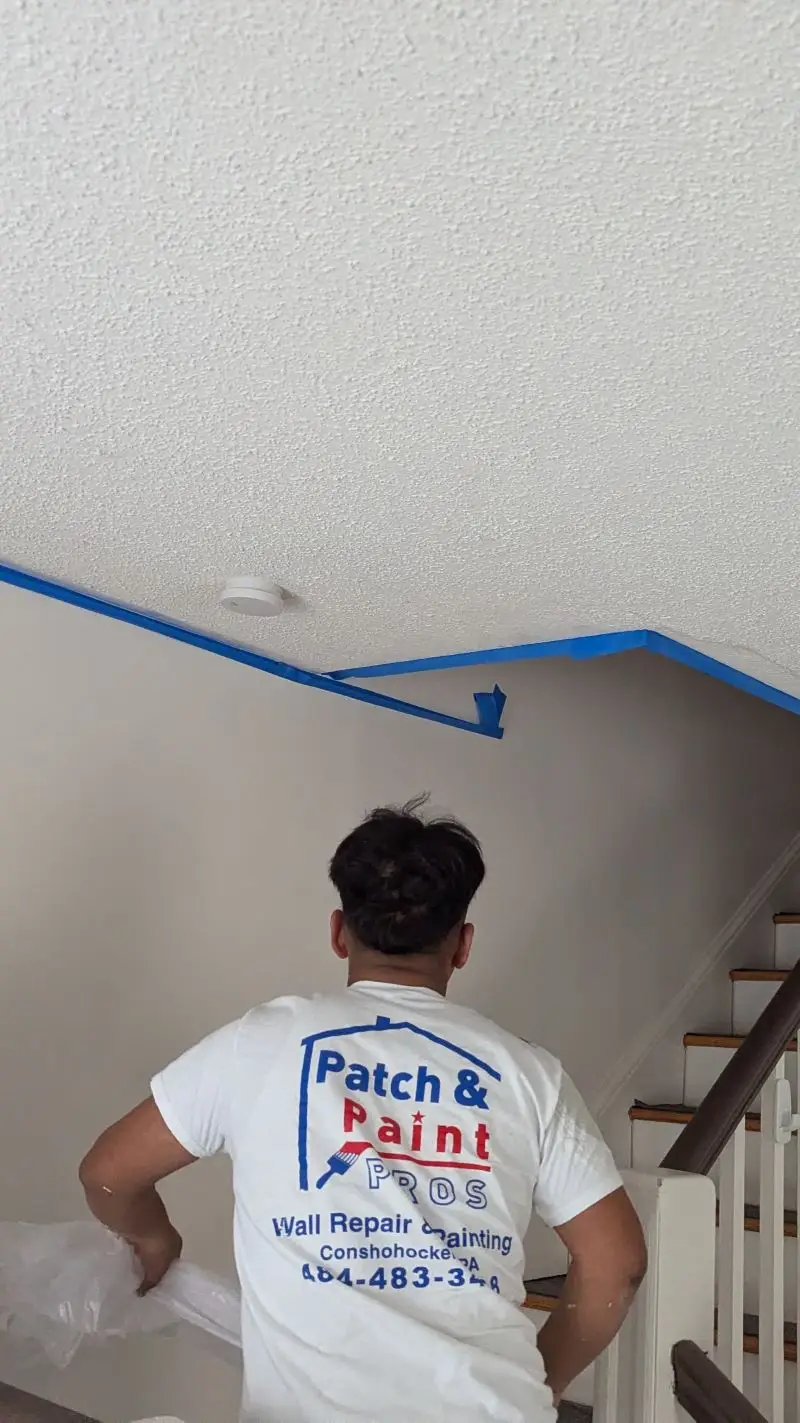Basement water damage mold is a common problem in many homes. It can cause health problems, property damage, and even structural issues if it’s left untreated.
In this article, we’ll explain how to remove basement water damage mold and discuss ways to prevent it from returning. It’s important for homeowners to understand the basics of preventing and removing basement water damage mold so they don’t have to worry about these costly issues down the road.
With the right steps taken early on, you can keep your home safe from any potential harm caused by this type of mold growth.
What Is Basement Water Damage Mold?
Mold in the basement is like an unwelcome guest that just won’t go away. It can appear on walls, floors, and furniture as dark patches or a fuzzy texture, slowly creeping its way across your home.
The moisture from water damage creates an ideal environment for mold to grow and spread, leaving you with a musty odor and a feeling of dread. It’s not enough to know what it looks like; understanding the health risks associated with basement water damage mold is essential when deciding how to remove and prevent it.
What Are The Health Risks?
Let’s talk about the symptoms of mold exposure and how to prevent it from growing in the first place. We’ll cover what to watch out for and how to keep your home safe from basement water damage mold.
Symptoms Of Mold Exposure
Nobody wants to think about the potential health risks of mold exposure, but it is important to be aware of them. Symptoms can range from mild eye and throat irritation to severe respiratory problems or even more serious conditions.
Shortness of breath, coughing, wheezing, headaches, nausea, and skin rashes are all signs that you may have been exposed to toxic mold spores in your home or basement.
It’s not just adults who can suffer from these symptoms either – children are also at risk, so if you notice any changes in behavior or physical condition after a mold outbreak in your basement, make sure you seek medical advice as soon as possible.
Prevention Of Mold Growth
The best way to protect yourself and your family from the health risks of mold exposure is to prevent its growth in the first place. Taking steps such as keeping a clean, dry home, regularly checking for leaks and water damage, and sealing any cracks or gaps in walls can help keep mold at bay.
You should also consider having an air purifier installed if you have allergies, as this will reduce airborne spores which could cause respiratory problems. If you’re still concerned about potential mold growth, it’s always worth getting a professional inspection done – that way you’ll know exactly what needs doing to prevent it from happening again.
How To Remove Basement Water Damage Mold
Removing basement water damage mold can be a tricky job. It’s important to take the necessary precautions when taking on this project, as breathing in mold spores can cause health issues for you and your family.
Here are five key steps to help you remove basement water damage mold safely:
- Wear protective clothing such as gloves, goggles, and a face mask when cleaning up the affected area.
- Use an industrial-grade cleaner that is specifically designed to kill hazardous molds like black mold.
- Thoroughly clean all surfaces by scrubbing them with warm soapy water or using a steam cleaner if available.
- Dry out any wet areas completely before sealing off the surface with paint or epoxy sealant.
- Make sure there is adequate ventilation of the area after cleaning up the mold.
Taking these proper safety measures while removing basement water damage mold will ensure that it doesn’t come back again anytime soon.
How To Prevent Basement Water Damage Mold
Let’s start by talking about checking for basement leaks. This is an important step to ensure that any water-damaged mold doesn’t start growing in the first place.
Next, we should discuss sealing the basement walls. This is essential to prevent moisture from getting in and help mold to grow.
Finally, we should look at using dehumidifiers. These can help to lower the humidity in the basement, which can help to prevent water damage mold from forming.
Check the Basement For Leaks
Leaking basements are one of the main causes of water damage and mold growth. It’s important to check your basement regularly for any signs of moisture or dampness, as well as inspect pipes, fixtures, and other areas where water may be seeping in.
A simple inspection can help you find and repair any potential sources before they cause more significant issues. Pay special attention to windows, walls, and floors that could be leaking or have been exposed to water from outside sources like rain or snowmelt. With a few preventative steps now, you can save yourself costly repairs down the line!
Seal Basement Walls
In order to further protect your basement from water damage and mold growth, you should consider sealing the walls. This will help keep out moisture and prevent any existing issues from getting worse.
It’s easy to do this yourself with some basic supplies like caulk or sealant, but if you’re unsure of how to do it properly, a professional can come in and handle the job for you. Sealing your basement walls is an important step in keeping your home safe from water damage and mold growth!
Use Dehumidifiers
Now that you’ve sealed your basement walls, let’s talk about another way to protect against water damage and mold growth – dehumidifiers. Using a dehumidifier in the summer months can help reduce moisture levels in the air which reduces the chances of mold forming.
It also helps lower humidity levels which can cause condensation on cool surfaces like windows or pipes. Dehumidifiers are relatively inexpensive and easy to use, so there’s no excuse not to get one! This is an important step in keeping your home safe from costly water damage and unwanted mold growth.
Professional Basement Water Damage Mold Removal
Water damage in the basement can lead to excess moisture and humidity, creating an environment where mold can grow. To prevent this, it’s important to maintain your home’s plumbing and drainage systems to prevent excess water from seeping into the basement.
Make sure to regularly inspect and repair any leaks or damage to these systems. Additionally, sealing and insulating windows can prevent outside moisture from entering the basement.
If you do discover mold growing in your basement, it’s best to seek professional help to remove it. A qualified contractor can identify the source of the problem and offer solutions to prevent future growth.
Hardware stores also carry products that can help eliminate mold and reduce excess humidity, such as dehumidifiers and moisture-absorbing materials.
By taking these proactive steps, you can prevent basement water damage mold and protect your home’s structure and air quality.
Final Thoughts
The presence of basement water damage mold can be a serious concern for homeowners. We must take the necessary steps to properly remove and prevent it from occurring in our homes.
To do this, we must understand what causes it, the health risks associated with it, and the removal and prevention methods available. By using a professional service if needed, we can ensure that any mold present is taken care of safely and effectively while also preventing future occurrences – thus protecting ourselves and our families from potential harm.
Simile: Our home should be like a fortress against basement water damage mold – solid walls that cannot be penetrated by moisture or fungi.





